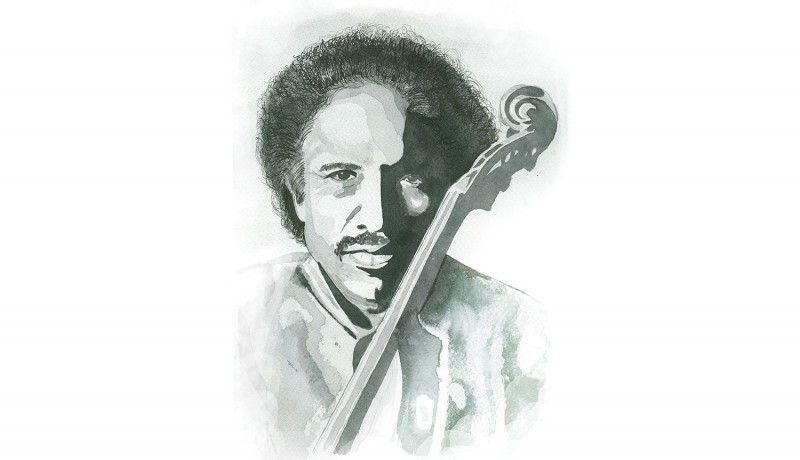
People

Padma Bhushan, Violinist
Born: 23 July 1947
Birthplace: Chennai
What I love most about India is its cultural, ethnic and linguistic diversity and how everything manages to coexist so beautifully. For the most part, I see tolerance and Gandhi’s vision of peace wherever I go. Sometimes we should also take a second to focus on the greatness that surrounds us, which we are fortunate to experience every day.
India has been the best country for me. It was not my choice to be born here but I’m grateful that I was. As a child, my parents, who belonged to a long line of classical musicians, trained me in Carnatic music. It was my father’s dream for the violin to be a solo instrument in India and he worked hard towards that goal in the 1930s. My parents also exposed me to Western classical music and culture.
In India, I think it comes naturally to us to be respectful of other cultures, to accept differences, to appreciate the beauty in them. From the 1970s, I have been experimenting with northern Indian jugalbandi, Western classical, jazz and global collaborations. For the past 25 years, through the Lakshminarayana Global Music Festival, we have seen audiences lining up to hear musicians that have never been heard in the country before. They are ready and willing to experience and respect something new.
For the past few years, I have observed through SaPa (Subramaniam Academy of Performing Arts) and the SaPa in Schools programme that young Indian parents are keen to expose their children to traditional Indian music and culture, and global music too. At the start of our third year, we already have over 7,000 students. These are examples of what makes India great—an open-mindedness and forward vision that respects culture and tradition.
I was born just a few days before Independence. At birth, my parents thought of naming me Swatantra (meaning freedom) Balasubramaniam, but later settled on Subramaniam. In the early days, people slowly started putting down their roots and adapting modern sophistication to the Indian scenario. There were many social and economic heroes at that time who worked hard to establish India and the post-Independence Indian dream.
I think the limitations I have faced in India have only helped me grow stronger. We learned, from a young age, that it was important to work hard and make something of ourselves, that a little struggle isn’t a bad thing.
We slowly gained the ability to travel, to spread Indian music and culture to the world. The idea of growing along with India was not lost on me. For me, in a sense, the highlight of India taking her place on the world stage was when Prime Minister Modi made his speech at Madison Square Garden in New York, in 2014. I had the privilege of being there, watching as India captivated the world, and heard 20,000 people sing our national anthem led by my wife Kavita Krishnamurti Subramaniam and I.
My mission is to continue to propagate Indian and global music. When I first started travelling around the world in the early 1970s, there was a misconception that only Western classical music was classical music. Everything else was considered ethnic or folk music. It was very important to me that people know that India has classical music too. We have folk and devotional, and many other styles of music in India—but also classical music.
Carnatic music, or southern Indian classical music, is perhaps the most methodical, scientific form of music. I have studied music from around the world, but have never found one as systematically organised and complex, both rhythmically and melodically. Millions of scales can be derived from the Carnatic raga system and many still haven’t been explored. Some of the most complex rhythmic patterns are Carnatic, and nowadays I can see drummers from around the world incorporating them.
Indian music is now getting the respect it deserves. I have been commissioned to write many orchestral works with Indian influences for Western classical orchestras. I have collaborated with great musicians from different backgrounds and I see people becoming more aware of Indian music and culture, and more receptive to it as something substantial, and not just a fad. They are beginning to want to understand it in depth, not just superficially.
My dream is for India to lead a revolution of peace around the world. Like Gandhi influenced Mandela and Martin Luther King Jr, the hope of a modern-day India can emerge, one that can influence the world and spread culture, peace and harmony.
Milestones
Early 70s: Completed MBBS and registered as a medical practitioner; completed master’s in Western classical music from Cal Arts
1985: Orchestral composition and performance in USA
1992: Founded the Lakshminarayana Global Music Festival
1999: Released the critically acclaimed album, Global Fusion
1991: Received the Sangeet Natak Akademi Award for ‘The Most Creative Artist’
2014: Established Subramaniam Academy of Performing Arts (SaPa)
Currently working on a number of orchestral commissions, recordings of rare ragas
Illustration by Sanjhi Shah Featured in Harmony — Celebrate Age Magazine August 2016
you may also like to read
-
For the love of Sanskrit
During her 60s, if you had told Sushila A that she would be securing a doctorate in Sanskrit in the….
-
Style sensation
Meet Instagram star Moon Lin Cocking a snook at ageism, this nonagenarian Taiwanese woman is slaying street fashion like….
-
Beauty and her beast
Meet Instagram star Linda Rodin Most beauty and style influencers on Instagram hope to launch their beauty line someday…..
-
Cooking up a storm!
Meet Instagram star Shanthi Ramachandran In today’s web-fuelled world, you can now get recipes for your favourite dishes at….







